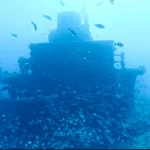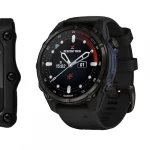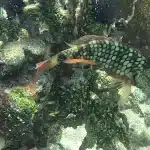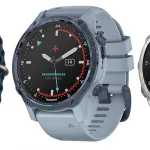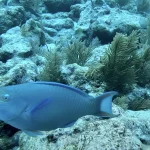Table of Contents
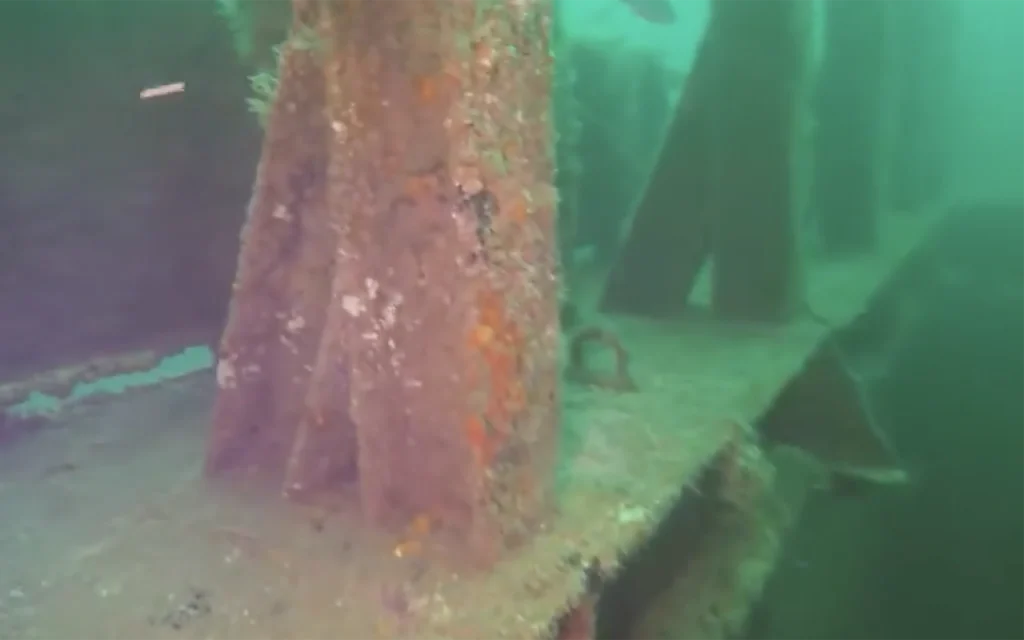
The Pete Tide II’s combination of structural integrity, diverse marine life, historical background, and engaging dive features make it a unique and popular destination on the Florida Panhandle Shipwreck Trail.
Article at a Glance
- Historical Background: The Pete Tide II was an offshore oil rig supply ship that operated from 1979 until its intentional sinking in 1993, transforming it into an artificial reef.
- Diving Depth: The wreck is situated at a depth of 100-105 feet (30.5-32 meters), with the upper structure accessible starting at around 60 feet (18.3 meters), making it suitable for advanced divers.
- Unique Features: The shipwreck retains three decks of superstructure and an intact pilothouse, providing divers with a fascinating exploration experience of a late 20th-century vessel.
- Marine Ecosystem: The Pete Tide II has become a thriving artificial reef, attracting diverse marine life, including schools of spadefish, minnows, wahoo, and blackfin tuna.
- Location: The wreck is located approximately 12 nautical miles south of the Pensacola Pass, with coordinates at 30° 08.767′ N, 087° 14.017′ W.
- Popularity: As part of the Florida Panhandle Shipwreck Trail, the Pete Tide II is ranked #3 among dive sites, making it a favored destination for scuba divers in the area.
- Safety Considerations: Advanced diving experience is recommended, and divers should utilize dive computers for safety while exploring this well-preserved wreck.
Shipwreck Location Coordinates and Depth
Depth
100 feet (30.5 meters)
Location Coordinates
30° 08.767′ N, 087° 14.017′ W
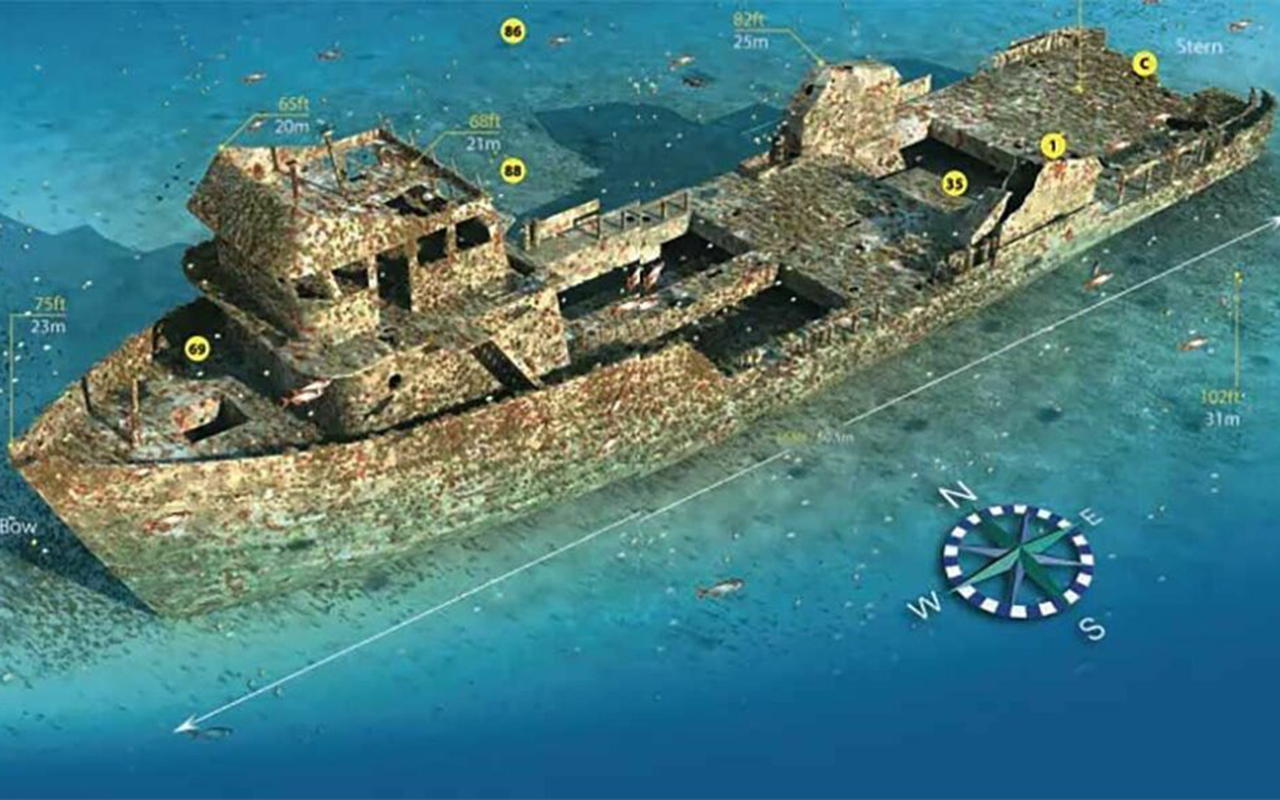
What Do Scuba Divers Say About This Ship
Diver Experiences
- Entertaining exploration: Divers find the Pete Tide II offers engaging swim-throughs, particularly in the pilot house and the other two decks of the superstructure.
- Marine life encounters: The wreck is known for attracting a variety of marine life. Divers often report seeing:
- Dive conditions:
Dive Site Characteristics
- Pairing opportunity: Divers often pair the Pete Tide II dive with the nearby YDT-14 wreck, as they are close to each other.
- Artificial reef history: The Pete Tide II became an artificial reef in 1993 after years of servicing offshore oil rigs in the Gulf.
- Structure: The 166-foot (50.6-meter) long vessel offers three decks of superstructure for divers to explore, with the intact pilothouse being a particular point of interest.
What Kind of Marine Life Can Be Found on The Ship
Common Marine Life
- Schooling fish:
- Pelagic species:
Other Marine Life
While not specifically mentioned for the Pete Tide II, artificial reefs in the area typically attract:
- Reef fish: Various species of snapper, triggerfish, and tropical fish are likely to be present.
- Larger predators: Amberjack and occasionally sharks may be seen in the vicinity.
Dive Site Characteristics
The Pete Tide II’s structure contributes to its rich marine life:
- The wreck sits upright in about 100 feet (30.5 meters) of water.
- It offers three decks of superstructure for exploration, starting at around 60 feet (18.3 meters) depth.
- The intact pilothouse provides an excellent habitat for fish, creating swim-throughs teeming with marine life.
Key Information
| Attribute | Details |
|---|---|
| Name | Pete Tide II |
| Type | Offshore Supply Vessel (OSV) |
| Purpose | Oil rig supply ship |
| Length | 166.4 feet (50.7 meters) |
| Beam | 38 feet (11.6 meters) |
| Draft | 13.5 feet (4.1 meters) |
| Built | Late 1970s |
| Service Years | 1979 – 1993 |
| Sinking Date | 1993 |
| Sinking Purpose | Intentionally sunk as an artificial reef |
| Depth | 100-105 feet (30.5-32 meters) |
| Top Structure Depth | 60 feet (18.3 meters) |
| Location | 30° 08.767′ N, 087° 14.017′ W |
| Distance from Shore | 12 nautical miles south of Pensacola Pass |
| Notable Features | Three decks of superstructure, intact pilothouse |
| Marine Life | Spadefish, minnows, wahoo, blackfin tuna |
| Dive Difficulty | Advanced |
| Shipwreck Trail Ranking | #3 on Florida Panhandle Shipwreck Trail |
What Makes The Pete Tide II Shipwreck a Unique Diving Experience
Structural Characteristics
- Upright position: The ship sits upright in 100 feet (30.5 meters) of water, providing an authentic shipwreck exploration experience.
- Multi-level exploration: It offers three decks of superstructure for divers to explore, starting at around 60 feet (18.3 meters) depth.
- Intact pilothouse: The wreck features an intact pilothouse, which is a major point of interest for divers.
Marine Life Encounters
- Schooling fish: The pilothouse is often teeming with mesmerizing schools of spadefish and minnows, creating a captivating visual spectacle.
- Pelagic species: Divers descending to the ship’s aft work platform and sandy bottom may encounter wahoo and black fin tuna.
Historical Significance
- Former purpose: Before becoming an artificial reef, the Pete Tide II served as an offshore oil rig supply ship, carrying laborers and provisions to various rigs in the Florida Panhandle.
- Intentional sinking: The vessel was purposefully sunk in 1993 to create an artificial reef, adding to its historical interest.
Diving Experience
- Swim-throughs: The intact pilothouse and other decks offer entertaining swim-throughs for divers to explore.
- Pairing opportunity: The wreck is often paired with the nearby YDT-14 for a two-dive experience, as they are close to each other.
How Does The Pete Tide II Compare to Other Shipwrecks in Florida
Historical Context
- Age: The Pete Tide II is relatively modern, intentionally sunk in 1993 as an artificial reef. This contrasts with many historic shipwrecks in Florida dating back to colonial times or World War II.
- Purpose: Unlike treasure ships or wartime casualties, the Pete Tide II was an oil rig supply vessel, representing Florida’s more recent maritime history.
Diving Experience
- Intact structure: The Pete Tide II sits upright with three accessible decks and an intact pilothouse, offering a more complete exploration experience compared to older, more deteriorated wrecks.
- Depth: At 100 feet deep, it’s accessible to advanced recreational divers, unlike some deeper wrecks that require technical diving.
Marine Life
- Artificial reef ecosystem: As a purpose-sunk artificial reef, the Pete Tide II has developed a rich ecosystem, attracting diverse marine life including large schools of fish.
Comparison to Other Florida Wrecks
- Treasure wrecks: Unlike the Spanish galleons in the Florida Keys, the Pete Tide II doesn’t offer treasure hunting opportunities but focuses on marine life and structural exploration.
- World War II wrecks: Compared to WWII-era shipwrecks off Florida’s coast, the Pete Tide II is in better condition and was not a casualty of conflict.
- Accessibility: The Pete Tide II is more easily accessible than some remote or deep wrecks, making it a popular choice for recreational divers.
What is The Full History of This Ship
Origins and Service
- The Pete Tide II was an offshore oil rig supply ship.
- It operated from 1979 to 1993, carrying laborers and provisions to various oil rigs in the Florida Panhandle.
- The ship’s name suggests there was a Pete Tide I, which was reportedly destroyed in a fire, leading to the creation of Pete Tide II.
Specifications
- Length: 166.4 feet (50.7 meters)
- Beam: 38 feet (11.6 meters)
- Draft: 13.5 feet (4.1 meters)
Transformation to Artificial Reef
- In 1993, the Pete Tide II was intentionally sunk by Escambia County to create an artificial reef.
- This transformation from a working vessel to an artificial reef was part of a broader effort to enhance marine habitats and create diving attractions in the area.
Current State
- The wreck sits upright in about 100-105 feet (30.5-32 meters) of water.
- It’s located approximately 12 nautical miles south of the Pensacola Pass.
- The upper structure is accessible starting at around 60 feet (18.3 meters) depth.
- The ship offers three decks of superstructure for divers to explore.
- The pilothouse remains intact and is a major point of interest for divers.
Significance
- The Pete Tide II is part of the Florida Panhandle Shipwreck Trail.
- It’s listed as #3 on this trail, indicating its popularity and importance as a dive site.
- The wreck has become a thriving artificial reef, attracting various marine life, including schools of spadefish and minnows, as well as larger species like wahoo and black fin tuna.
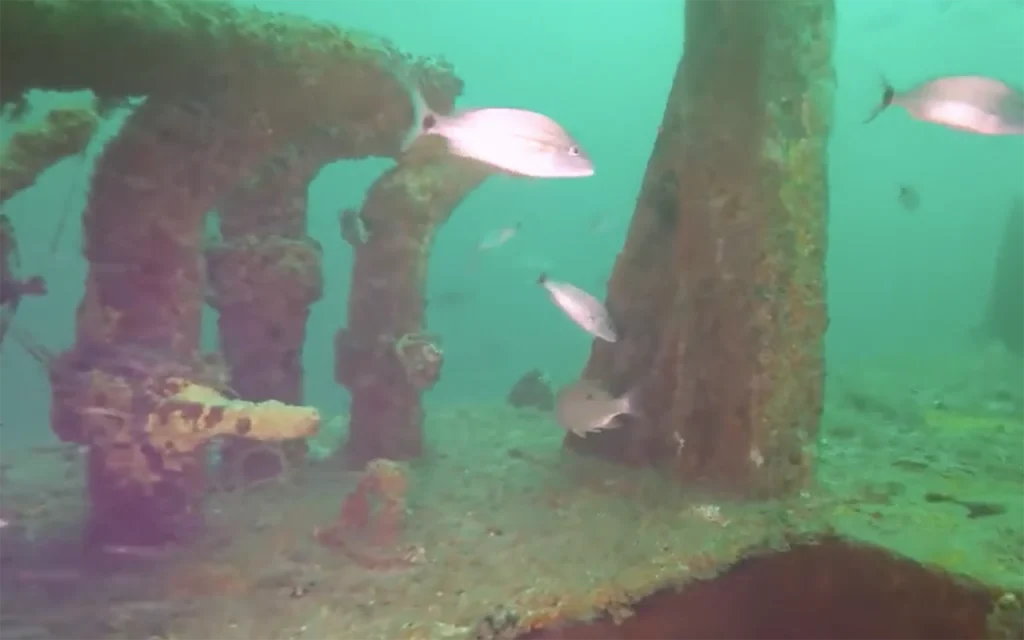
What Historical Features Can Still Be Identified on The Pete Tide II Wreck
Intact Structural Elements
- Pilothouse: The intact pilothouse is one of the most prominent and well-preserved historical features of the Pete Tide II. It offers divers an opportunity to explore a key part of the ship’s operational history.
- Three decks of superstructure: The wreck retains three decks of its original superstructure, starting from about 60 feet (18.3 meters) depth. This allows divers to visualize the ship’s original layout and purpose.
Original Purpose Indicators
- Aft work platform: The presence of the aft work platform is a reminder of the ship’s original purpose as an offshore oil rig supply vessel. This area would have been crucial for loading and unloading supplies and equipment.
Overall Ship Layout
- Upright position: The fact that the Pete Tide II sits upright on the seafloor at 100 feet (30.5 meters) depth allows divers to easily discern the original shape and design of the vessel.
- Ship dimensions: The wreck’s 166.4-foot (50.7-meter) length and 38-foot (11.6-meter) beam are still apparent, giving divers a sense of the ship’s size and proportions.
What Safety Measures Are in Place for Divers Visiting the Pete Tide II
- Depth considerations:
- The wreck sits at a maximum depth of 100-105 feet (30.5-32 meters).
- The upper structure is accessible starting at around 60 feet (18.3 meters) depth, allowing for longer bottom times and reduced risk of decompression sickness.
- Dive experience requirements:
- The Pete Tide II is recommended for advanced divers due to its depth and structure.
- Some dive operators may require Advanced Open Water certification or equivalent experience.
- Dive planning:
- Dive computers or watches are required for all dives to this site, helping divers monitor their depth, time, and decompression status.
- Guided dives:
- Many dive operators offer guided dives to the Pete Tide II, providing professional supervision and local knowledge of the site.
- Artificial reef designation:
- As an intentionally sunk artificial reef, the Pete Tide II was likely prepared for diving, with potential hazards removed or minimized.
- Intact structure:
- The wreck’s upright position and intact superstructure provide a relatively stable environment for divers to explore.
- Visibility:
- The site typically offers good visibility (10-30 meters), enhancing diver safety by improving situational awareness.
- Boat access:
- The wreck is only accessible by boat, ensuring that divers have proper surface support and emergency assistance if needed.
Dive Shops That Provide Diving Trips to This Shipwreck
- MBT Divers: This dive shop in Pensacola offers charter services to various dive sites in the area. While not specifically mentioned for the Pete Tide II, they likely offer trips to this popular wreck.
- Wet Dreams Charters: This company has detailed information about the Pete Tide II on their website, suggesting they likely offer dive trips to this site.
North Florida Wrecks
- USS Oriskany
- USS Massachusetts
- SS Tarpon
- SS Gulf America
- Empire Mica
- USS Chippewa
- Avocet
- Black Bart
- The Vamar
- San Pablo
- USS Narcissus
- The Loftus Wreck
- The Dorothy Louise
- The Mizpah
- MV Janet
- The Eidsvag
- YDT-14 and YDT-15
- USS Strength
- Miss Louise
- The Lulu
- PC-1174
- Three Coal Barges
- USS Accokeek (ATA-181)
- El Dorado
- The Grey Ghost
- The Pete Tide II
- Red Sea Tug

